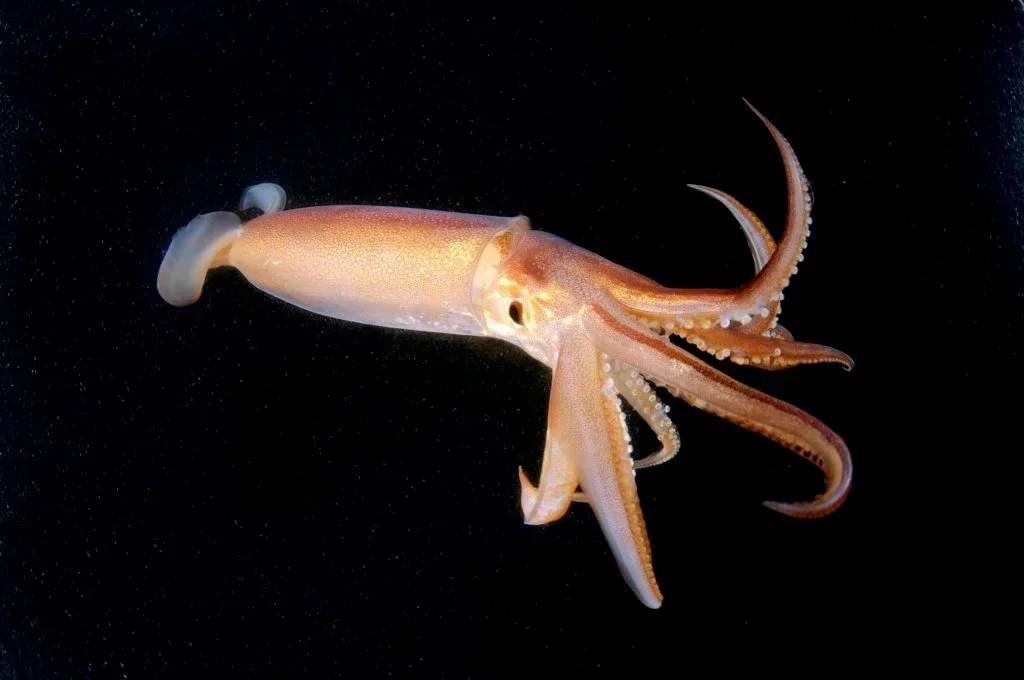Digital Fossil-Mining and Evolution of Squids | 01 Jul 2025
Using digital fossil-mining techniques, scientists have uncovered that squids dominated ancient oceans 30 million years earlier than previously believed, shedding new light on their deep evolutionary history.
- Researchers digitally identified at least 40 species from two modern squid groups—Oegopsida (deep-sea squids) and Myopsida (coastal squids)—in 110–70 million-year-old Cretaceous concretions found in Japan.
- Digital fossil-mining involves using technologies like 3D scanning, CT imaging, AI, and GIS to extract and analyze fossil data without damaging original fossils.
Squids
- About: Squids, belonging to the Cephalopod class (with octopuses and cuttlefish), have a soft mantle, an internal shell (gladius), a parrot-like beak, two tentacles for capturing prey, and eight arms for holding it.
- Like all cephalopods, they have three hearts and use jet propulsion for movement.
- Habitat Diversity: Squids are found worldwide, from shallow coasts to 3 miles deep, and range in size from tiny pygmy squids to giant squids with the largest eyes in the animal kingdom (volleyball-sized).
- Behavior and Intelligence: Squids are among the most intelligent invertebrates, using chromatophores for camouflage, communication, and predator evasion.
- They can ink-spray, and detach arm-tips for distraction, and show social behaviors like cooperative hunting (Humboldt squid) and mate guarding.
- Technological Contributions: They inspired color-changing materials, eco-friendly self-healing packaging, and bio-inspired robotics.
- Uniqueness: Some squids can “fly” by gliding up to 164 feet, show parental care (e.g., bigfin reef squid), and mimic prey to lure food.
| Read More: Conservation of Cephalopods |

